Timing of major earthquakes
Case Studies in Statistical Thinking

Justin Bois
Lecturer, Caltech
Models for earthquake timing
- Exponential: Earthquakes happen like a Poisson process
- Gaussian: Earthquakes happen with a well-defined period
Stable continental region earthquakes
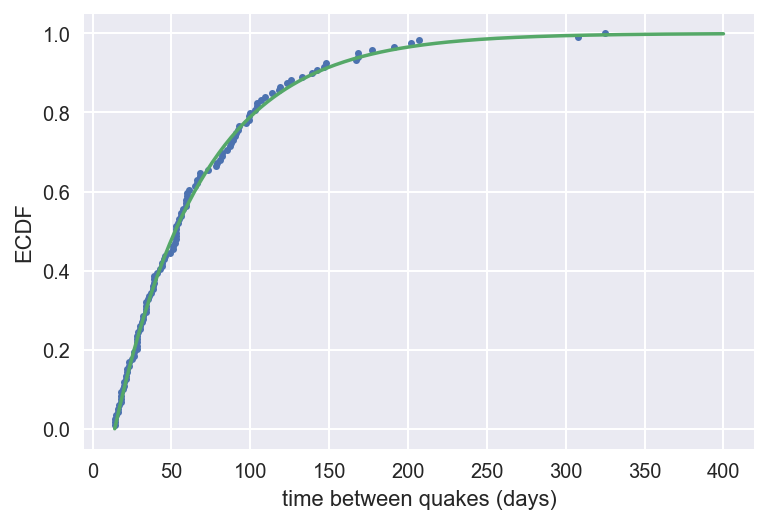
1 Data source: USGS Earthquake Catalog for Stable Continental Regions
The Nankai Trough
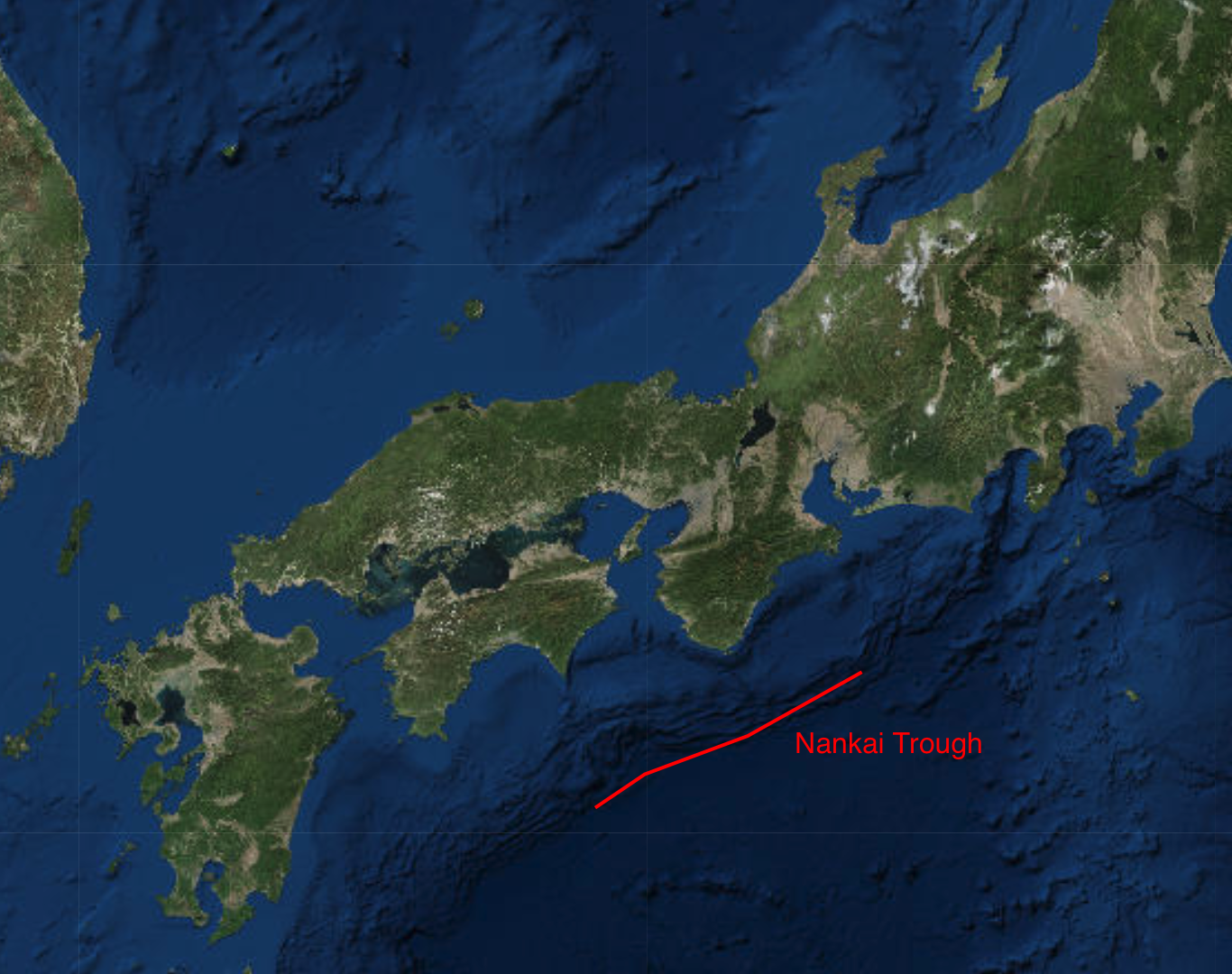
Earthquakes in the Nankai Trough
| Date | Magnitude |
|---|---|
| 684-11-24 | 8.4 |
| 887-08-22 | 8.6 |
| 1099-02-16 | 8.0 |
| 1361-07-26 | 8.4 |
| 1498-09-11 | 8.6 |
| 1605-02-03 | 7.9 |
| 1707-10-18 | 8.6 |
| 1854-12-23 | 8.4 |
| 1946-12-24 | 8.1 |
ECDF of time between Nankai quakes
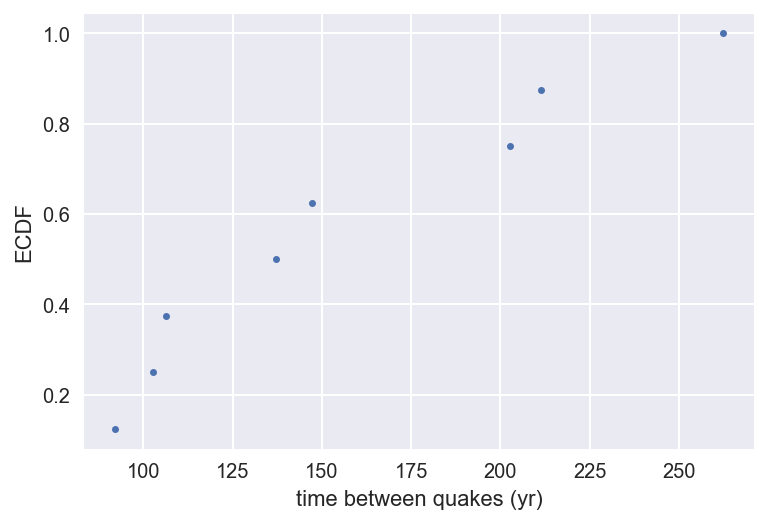
Formal ECDFs
ECDF(x) = fraction of data points $\le$ x
Formal ECDFs
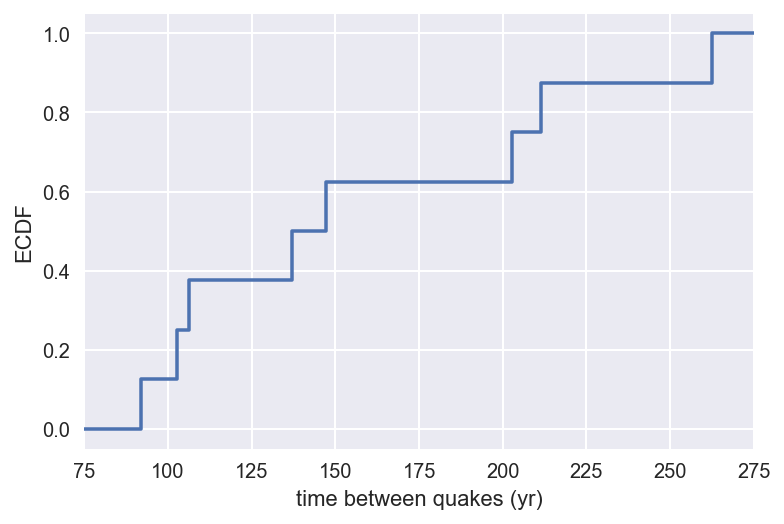
Formal ECDFs
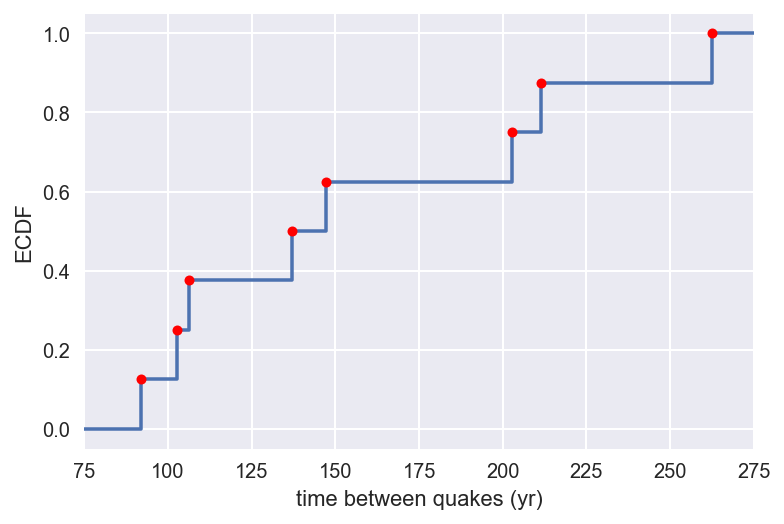
# time_gap is an array of interearthquake times
_ = plt.plot(*dcst.ecdf(time_gap, formal=True))
_ = plt.xlabel('time between quakes (yr)')
_ = plt.ylabel('ECDF')
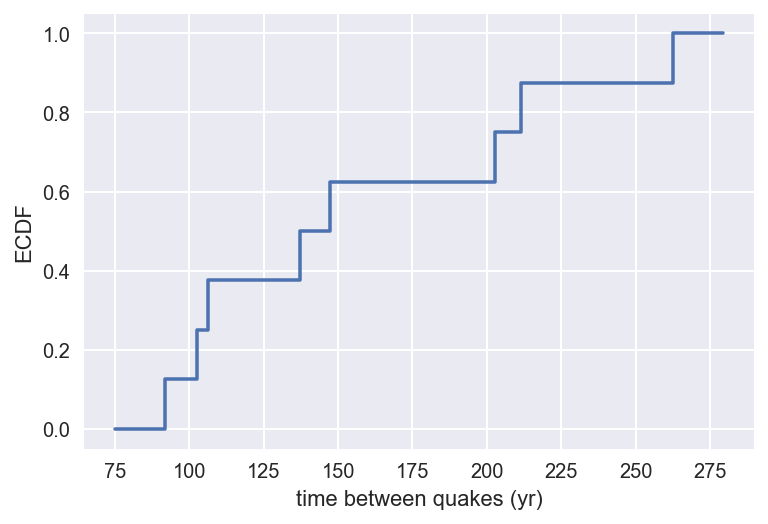
# Compute the mean time gap
mean_time_gap = np.mean(time_gap)
# Standard deviation of the time gap
std_time_gap = np.std(time_gap)
# Generate theoretical Exponential distribution of timings
time_gap_exp = np.random.exponential(mean_time_gap, size=100000)
# Generate theoretical Normal distribution of timings
time_gap_norm = np.random.normal(
mean_time_gap, std_time_gap, size=100000
)
# Plot theoretical CDFs
_ = plt.plot(*dcst.ecdf(time_gap_exp))
_ = plt.plot(*dcst.ecdf(time_gap_norm))
Model for Nankai Trough
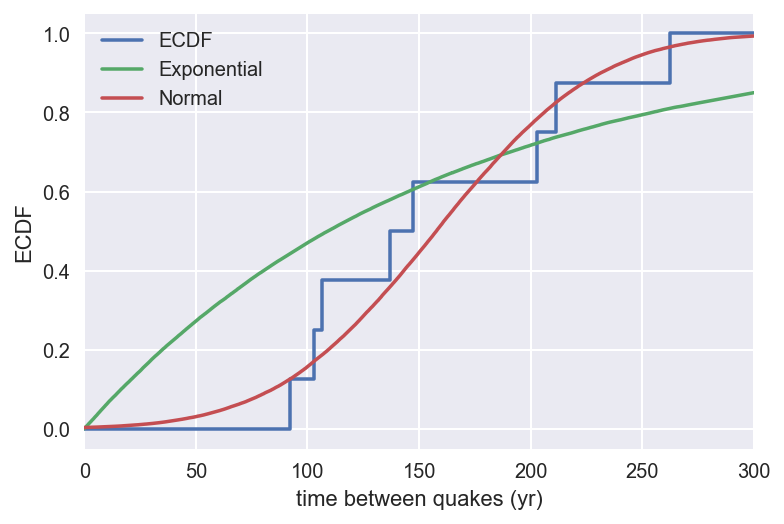
Let's practice!
Case Studies in Statistical Thinking

